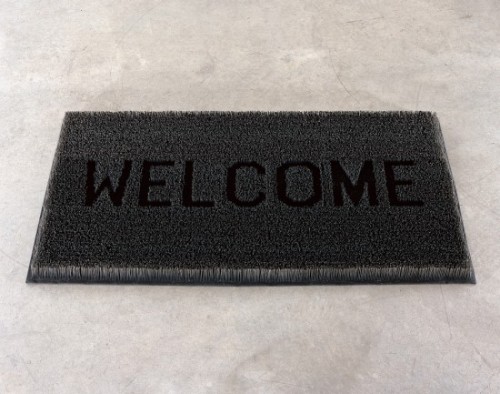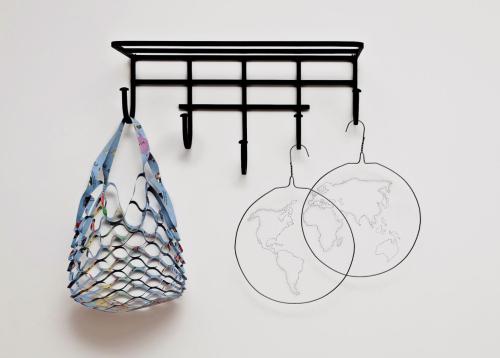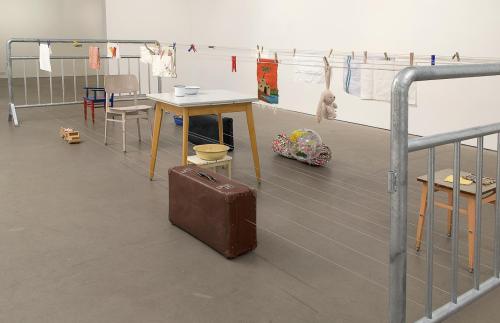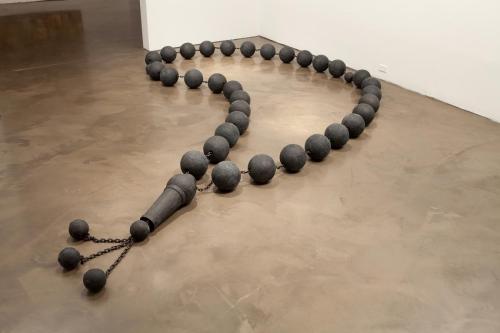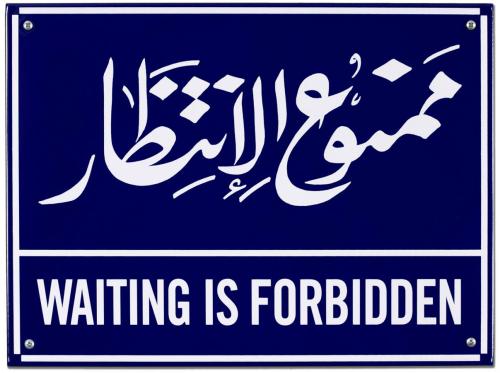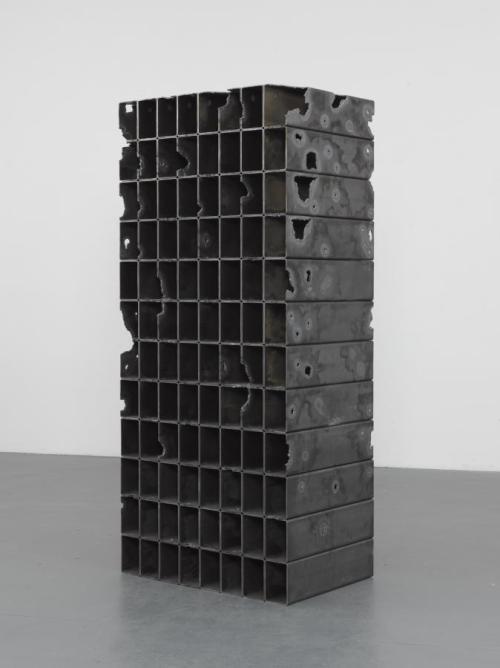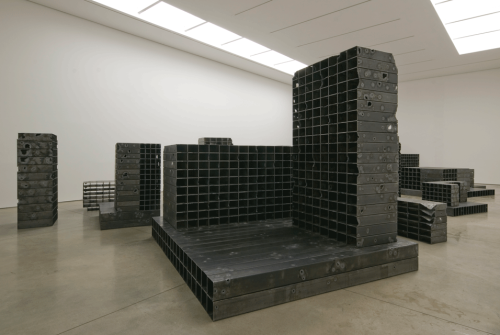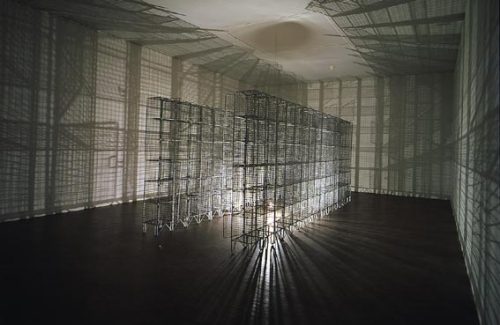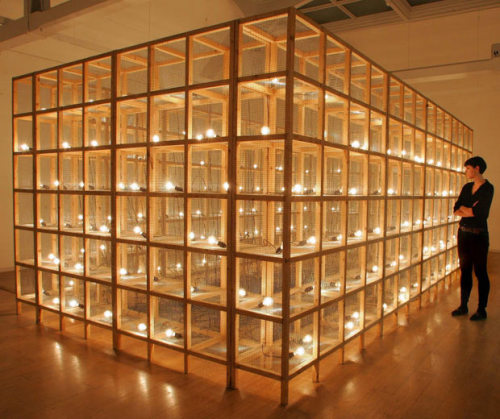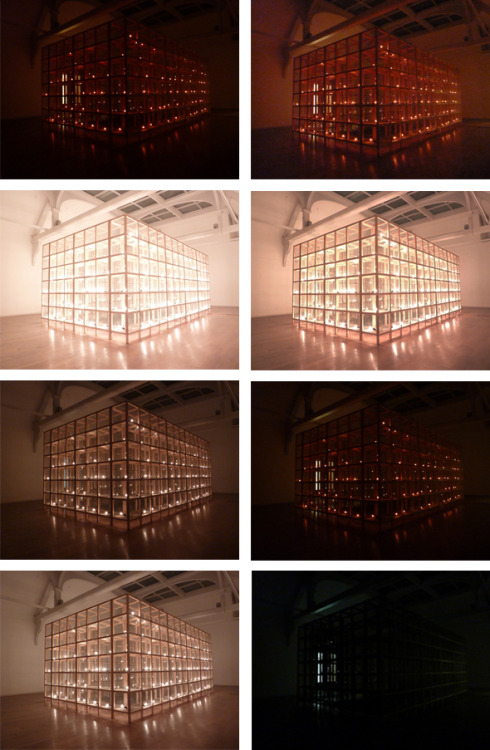Mona Hatoum was born into a Palestinian family in Beirut, Lebanon in 1952 and now lives and works in
Mona Hatoum was born into a Palestinian family in Beirut, Lebanon in 1952 and now lives and works in London and Berlin. “In the world of culture artist Mona Hatoum has found the most significant visual expression for the experience of “New Europeans” – living on that unstable ground between two cultures, where you do not feel at home in either – not the one you left or fled from nor the one you have voluntarily or involuntarily become a part of.”1. Bourj III: A Welcome Mat that bristles feature thousands of steel pins. Home is no longer a safe haven but a dangerous place.2. Untitled (rack) 3. Mobile Home: Between two metal police barriers are a suitcase, various tables, children’s toys and fabric swatches, all attached to taut motorized wires that pull the objects back and forth, connecting stability at home with law and order.4. Worry Beads: Worry beads take the form of a Muslin string of prayer beads, but is presented in gigantic and threatening proportions because the beads have been enlarged to the size of cannon balls. No longer used to mark the monotonous rhythm of a prayer or a chant, the hypnotic sound of the beads has now become a series of precise and violent blows that put us on alert.5. Waiting is Forbidden: Waiting is forbidden’ is the literal translation of Arabic characters on a street sign Hatoum saw in Cairo during her residency and subsequent exhibition at the Townhouse Gallery.‘Waiting is Forbidden’ has been fabricated in an edition of 6 in materials used for traffic and highway signs. It is the artist’s intent that it be installed alone on a wall - creating a space one is forbidden to wait within. 6 & 7. Bunker: Recreats 23 bombed-out Beirut buildings in stacked sections of rectangular mild steel tubing – a material that looks anything but mild in this context. The cuboid Modernist structures spattered with bullet hole-like borings, gougings and serrations create a brutally ominous cityscape in the specially dimmed light.8. Light Sentence: Light Sentence is a play of the expression “life sentence”. The viewer moves around a cage-like structure, interrupting and disturbing the violent shadows that are thrown up by a slowly moving light-bulb suspended within it.9 & 10. Current Disturbance: As the bulbs light up and fade out at irregular intervals, they sporadically illuminate the surrounding room and the unruly mass of wiring covering the floor.Excerpt from excellent interview with BOMB magazine:Mona Hatoum I dislike interviews. I’m often asked the same question: What in your work comes from your own culture? As if I have a recipe and I can actually isolate the Arab ingredient, the woman ingredient, the Palestinian ingredient. People often expect tidy definitions of otherness, as if identity is something fixed and easily definable.Janine Antoni Do you think those kinds of questions have made us overly self-conscious about how we represent ourselves and its effect on the work?MH Yeah, if you come from an embattled background there is often an expectation that your work should somehow articulate the struggle or represent the voice of the people. That’s a tall order really. I find myself often wanting to contradict those expectations.(continue reading) -- source link
Tumblr Blog : 5centsapound.tumblr.com
#mona hatoum#arab art#palestinian artist
